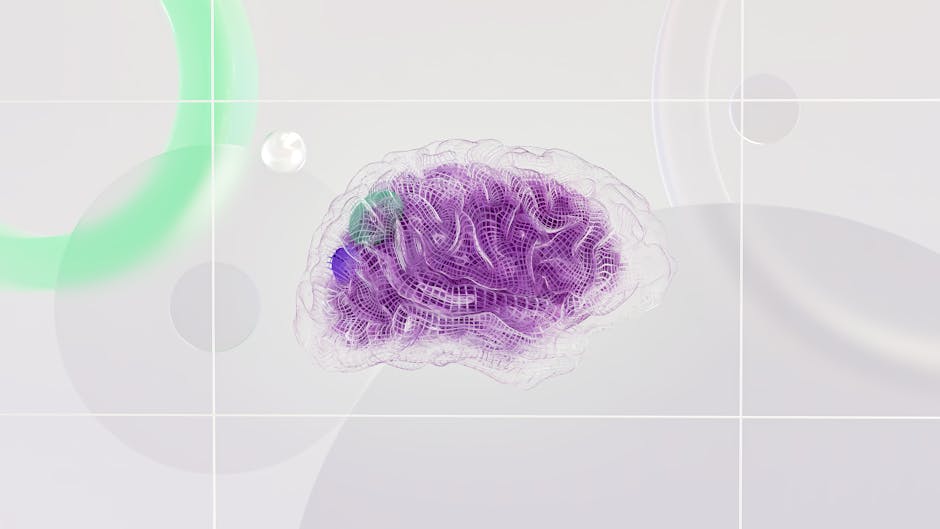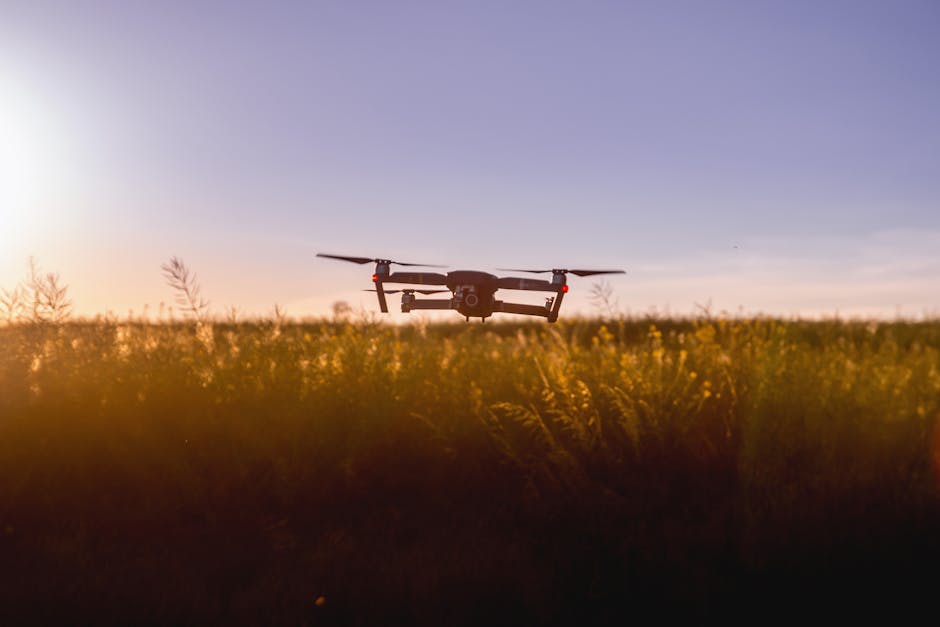Smart Agriculture: Leveraging IoT for Better Yield
You’re tyred of playing crop roulette, relying on guesswork and tyred farming techniques. That’s where IoT comes in – the game-changer that’s transforming agriculture into a data-driven powerhouse. With IoT sensors, you’ll get real-time monitoring of soil moisture, temperature, and crop health, so you can make informed decisions on watering, fertilising, and pest control. Drones will give you a bird’s-eye view of your crops, and predictive analytics will forecast weather patterns, ensuring you’re prepared for whatever Mother Nature throws your way. And that’s just the tip of the iceberg – stick around to discover how IoT can revolutionise your harvest.
Key Takeaways
• IoT sensors and monitoring systems provide real-time data on soil moisture, temperature, and crop health for informed farming decisions.• Farm robotics and automation increase efficiency and reduce labour costs through tasks like pruning, weeding, and harvesting.• IoT-enabled irrigation and water management optimise water usage, reducing waste and increasing crop yields.• Predictive analytics and weather forecasting enable farmers to prepare for weather events, reducing crop damage and increasing yields.• Drone technology and aerial imagery analysis provide actionable insights on crop health, growth rates, and soil conditions.
Precision Farming With Iot Sensors

You’re probably tyred of watching your crops wither away due to inefficient watering, fertilising, and pest control, which is why precision farming with IoT sensors has become a game-changer in modern agriculture.
It’s time to ditch those old-school farming techniques and upgrade to the 21st century. With precision farming, you can kiss those pesky crop failures goodby and hello to a bountiful harvest.
IoT sensors are the superheroes of the agricultural world, saving the day one data point at a time.
By collecting real-time data on soil moisture, temperature, and crop health, you can make informed decisions about when to water, fertilise, and control pests. No more guesswork, no more trial and error – just pure, unadulterated precision.
But wait, there’s more! Farm robotics is revolutionising the way we farm, making it possible to automate tasks like pruning, weeding, and harvesting.
It’s like having an army of farmhands at your beck and call, minus the coffee breaks and complaints about the weather.
And with sensor calibration, you can verify that your IoT sensors are giving you accurate data, not just a bunch of noise.
Real-Time Crop Monitoring Systems

Real-time crop monitoring systems are the ultimate farming sidekicks, providing you with a bird’s-eye view of your crops’ every move, from soil moisture levels to pest infestations, so you can swoop in and save the day before disaster strikes.
Think of it as having your own personal crop detective, constantly scouring the fields for signs of trouble. With real-time monitoring, you’ll know the second your crops start to get a little thirsty or show signs of disease. It’s like having a sixth sense for crop health – minus the crystal ball and vague prophecies.
Farm robotics plays a huge role in making this happen. Drones equipped with sensors and cameras can fly over your fields, capturing detailed images of your crops and sending back real-time data on their health. It’s like having your own personal crop health analyst, minus the hefty consulting fees.
With real-time crop monitoring, you can identify issues before they become major problems. No more guessing games or relying on intuition – you’ll have hard data to back up your farming decisions. And when you do spot a problem, you can swoop in with targeted solutions, saving time, money, and – most importantly – your crops. It’s farming in the 21st century, folks!
Optimising Irrigation With Iot Data

Now that you’ve got a grip on your crops’ health, it’s time to talk about giving them a drink – and not just any drink, but an optimised one, courtesy of IoT data that guarantees you’re not wasting a single drop.
You see, traditional irrigation methods are like playing a guessing game, hoping you’re providing just the right amount of water. But with IoT sensors, you’re no longer flying blind.
You can monitor moisture levels in real-time, adjusting your irrigation schedule to guaranty your crops receive exactly what they need, when they need it.
Think of it like having a personal hydration coach for your crops. IoT sensors track moisture levels, soil type, and temperature to provide precise irrigation recommendations.
And it’s not just about the quantity of water; IoT data also helps you regulate water quality.
You can detect even the slightest changes in pH levels, salinity, or nutrient levels, supplying your crops with only the good stuff.
Predictive Analytics for Weather Patterns

You’re probably tyred of getting caught in the rain without an umbrella, but for farmers, unpredictable weather can be a make-or-break situation.
That’s why you’re about to get cosy with predictive analytics, which uses historical climate data and fancy maths to forecast weather patterns.
Weather Pattern Analysis
By leveraging advanced predictive analytics, farmers can finally ditch their trusty old almanacks and accurately forecast weather patterns, giving them a fighting chance against Mother Nature’s mood swings. You can’t control the weather, but you can prepare for it. With IoT-enabled sensors and advanced climate modelling, you can analyse atmospheric conditions to predict weather patterns. This means you can plan planting, irrigation, and harvesting around the weather, reducing the risk of crop damage and increasing yields.
| Weather Pattern | Impact on Crops | Actionable Insights |
|---|---|---|
| Drought | Stunted growth, reduced yields | Irrigate proactively, adjust fertiliser application |
| Heavy Rainfall | Waterlogged soil, root rot | Implement drainage systems, adjust planting schedules |
| Heatwaves | Crop stress, reduced yields | Implement shade management, adjust irrigation schedules |
Climate Modelling Techniques
With advanced climate modelling techniques, you’re basically trying to outsmart the weather gods, and predictive analytics is your trusty crystal ball, helping you foresee those pesky weather patterns and plan your agricultural moves accordingly.
It’s like trying to tame the unpredictable – climate uncertainty is the ultimate party crasher, but with regional forecasting, you can at least anticipate its arrival.
By leveraging climate modelling techniques, you can identify trends, patterns, and correlations that’ll help you make informed decisions about planting, harvesting, and everything in between.
It’s not about controlling the weather (we’re not quite there yet, unfortunately!), but about being prepared for whatever Mother Nature throws your way.
Regional forecasting takes it a step further by providing hyper-local insights, allowing you to tailor your strategies to specific microclimates.
It’s like having a personalised weather butler, minus the fancy suit and snooty attitude.
With climate modelling techniques, you’ll be the master of your agricultural domain, making data-driven decisions that’ll leave the weather gods green with envy.
Drone Technology in Agriculture

You’re probably tyred of manually scanning fields for signs of trouble, so let’s talk about how drone technology can be your new best friend in agriculture.
With drones equipped with advanced sensors and cameras, you can get a bird’s-eye view of your crops’ health and identify issues before they get out of hand.
It’s time to take your farming to new heights – literally!
Crop Monitoring Systems
In the not-so-distant past, farmers relied on intuition and manual surveys to gauge crop health, but drone technology has revolutionised crop monitoring systems, allowing you to pinpoint issues before they escalate into full-blown disasters.
You can now identify nutrient deficiencies, detect pests, and spot signs of disease before they spread.
With farm robotics, you can automate tasks, making your job easier and more efficient.
Drones equipped with high-resolution cameras and sensors can capture detailed images of your crops, giving you valuable insights into their health.
By monitoring temperature, humidity, and soil moisture levels, you can promote growing conditions and guaranty peak crop growth.
With real-time data at your fingertips, you can make informed decisions, reducing the risk of crop failure and maximising your yield.
It’s time to trade in your intuition for hard data and take your crop monitoring to new heights – literally!
Aerial Imagery Analysis
Your fields are a treasure trove of data, and aerial imagery analysis is the key that reveals it, transforming your drone-captured images into actionable insights that’ll make you a master of crop management.
With drones, you’re no longer limited to ground-level observations. You can now capture bird’s-eye views of your fields, and then, with aerial imagery analysis, tap into the secrets hidden within those images.
Image processing algorithms work their magic, extracting valuable information from the images, such as crop health, growth rates, and soil conditions.
Data visualisation tools then step in, presenting the insights in a way that’s easy to comprehend, even for those who aren’t tech-savvy. You’ll be able to identify areas that need attention, track changes over time, and make data-driven decisions to optimise your crop yields.
It’s like having a superpower – the power to see your fields in a whole new light. By leveraging aerial imagery analysis, you’ll be able to respond to challenges before they escalate, and that’s the secret to growing a bumper crop.
Precision Farming Tools
Frequently, drone technology swoops in as the ultimate precision farming tool, revolutionising crop management by providing pinpoint accuracy and real-time insights that help you outsmart the competition.
With drones, you can monitor soil health, detect early signs of stress, and identify areas that need attention. It’s like having your own personal crop coach, minus the coach’s whistle and questionable motivational speeches.
Crop monitoring: Drones equipped with multispectral or thermal cameras can detect issues like water stress, pests, and diseases, allowing you to take action before it’s too late.
Variable rate application: By analysing drone-collected data, you can optimise fertiliser and pesticide application, reducing waste and environmental impact.
Farm robotics integration: Drones can work in tandem with farm robots to automate tasks like planting, spraying, and harvesting, making your farm more efficient and profitable.
With drone technology, you’re not just farming – you’re farming smart.
Soil Condition Monitoring Systems

You’re about to revolutionise your crop’s growth with precision farming by deploying soil condition monitoring systems that keep tabs on your soil’s essential signs, from moisture levels to nutrient deficiencies.
It’s like having a personal doctor for your soil, minus the white coat and awkward small talk.
With real-time data on soil moisture, you can optimise irrigation systems, reduce water waste, and prevent those pesky droughts that can devastate your harvest.
It’s a no-brainer, really.
But that’s not all.
Soil health is just as vital, and these systems got you covered.
By monitoring nutrient levels, pH balance, and microbial activity, you can identify potential issues before they become major problems.
It’s like having a crystal ball that shows you the future of your soil’s health.
With this insight, you can adjust your fertiliser applications, crop rotation, and even tillage practises to create a more balanced ecosystem.
The result? Healthier soil, healthier crops, and a healthier bottom line.
IoT-Enabled Supply Chain Management

IoT-enabled supply chain management is the secret ingredient that turns your farm into a logistical ninja, slicing through inefficiencies and eliminating waste like a hot knife through butter.
Traditional supply chain management is like trying to navigate a corn maze – it’s a mess, and you’ll likely get lost. But with IoT, you get real-time visibility into your inventory, shipments, and logistics. It’s like having a personal GPS guiding you through the process, ensuring your produce reaches its destination in top condition.
Inventory tracking: Say goodby to manual inventory cheques and hello to automated tracking, ensuring you always know what’s in stock and what’s on its way.
Logistics optimisation: IoT helps you identify the most efficient routes, reducing transportation costs and ensuring your produce reaches its destination faster.
Real-time monitoring: With IoT sensors, you can monitor temperature, humidity, and other environmental factors in real-time, ensuring your produce stays fresh throughout the supply chain.
Conclusion
So, you’re still wondering if smart agriculture is just a fancy buzzword?
Think again! Did you know that by 2050, the global population is expected to reach 9.7 billion, and farmers will need to produce 70% more food to feed everyone?
IoT-powered farming is the game-changer we need. With precision farming, real-time monitoring, and predictive analytics, farmers can increase yields while reducing waste.
It’s time to harvest the power of IoT and feed the future!
Contact us to discuss our services now!
